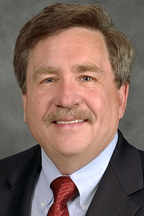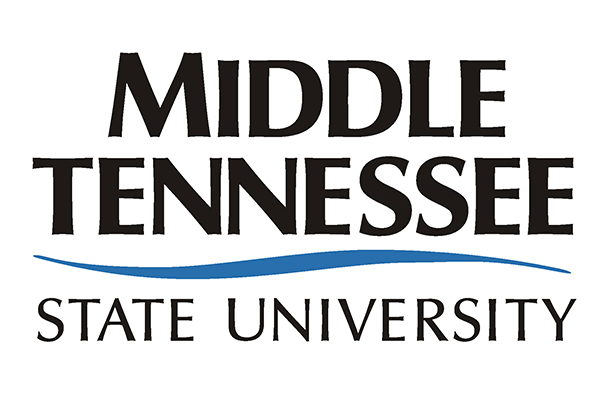MTSU unveiled a sweeping set of reforms Wednesday, Oct. 2, that its president and provost say will target processes and practices that create barriers to student success.
The plan, advanced by Provost Brad Bartel and endorsed by President Sidney A. McPhee, calls for the university to identify and rework general core courses with high academic failure rates. It outlines plans to revamp academic advising and develop customized graduation maps for each student.

Vincent Windrow

Dr. Mike Boyle
In a letter to the campus community, McPhee summarized the plan as helping to focus university efforts on just one question: “How can we help more students learn more?”
The plan is designed “to make sure that every student who comes to MTSU with the drive to achieve will be met with the best instruction from excellent professors who care for their success,” McPhee said.
“We will create a culture of high expectations coupled with personal attention when students struggle inside or outside of the classroom.”
The university also named two administrators to interim roles to oversee the reforms.
University College Dean Mike Boyle will also serve as interim vice provost for student success. Vincent Windrow, director of intercultural and diversity affairs, will be interim assistant vice provost for student success.
Boyle and Windrow will work with the president and provost to evaluate every division, office, department, school and college for measurable support for retention and graduation efforts.
MTSU will create a consolidated tutoring center to provide learning support to students in all majors, reestablish the practice of posting midterm grades and tweak its academic alert system to trigger intervention if a student appears to be in danger of failing.
McPhee underscored the need for bold steps to transform higher education, citing Gov. Bill Haslam’s goal for 55 percent of Tennesseans to earn a degree or certificate.

Dr. Brad Bartel

Dr. Sidney A. McPhee
“We must be consistent in the quality of services and support we deliver to students in all of our colleges and departments,” the president said. “We must measure our results and hold each other accountable.”
Bartel said many of these initiatives came from the deans of the university’s eight academic colleges, who analyzed practices and made recommendations for changes.
“When we enroll a student, we are making a commitment: If they put forth reasonable effort in our courses, we in turn must give them the instruction and support they need to achieve success,” the provost said.
McPhee said the plan is based on the results of six months of consultation and review, including a series of student success hearings involving every academic dean and division vice president. It calls for the university to:
• Implement innovation and reform in curriculum across all disciplines.
• Underscore the role of quality advising in student success.
• Champion other innovations to further support student success.
• Examine processes and practices to eliminate barriers to student success.
 The university has begun to identify general education courses with higher-than-average failure rates, he said. A task force of faculty and administrators are developing new approaches in those courses through curriculum redesign, supplemental instruction and alternative teaching methods.
The university has begun to identify general education courses with higher-than-average failure rates, he said. A task force of faculty and administrators are developing new approaches in those courses through curriculum redesign, supplemental instruction and alternative teaching methods.
McPhee said the university also will augment its student recruitment efforts with a new emphasis on transfer, international, high-ability and graduate enrollment.
And, Bartel said, the university will explore alternative methods of effective course delivery such as blended and online courses, courses taught at off-campus sites and other new teaching and learning modalities.
Specific elements of the “Quest for Student Success” plan are as follows.
◊ Implement innovation and reform in curriculum across all disciplines.
The university will:
• Use new technology to create more effective learning experiences for students, such as new learning configurations and course redesigns like “flipped classrooms,” which may allow teachers to spend more class time interacting with students.
• Look for opportunities to develop new teaching methods that will enhance learning, such as “hands-on” learning and mentored undergraduate research.
• Develop alternative degree pathways for every major for students who do not meet candidacy requirements, including utilization of the new Bachelor of University Studies degree.
• Develop exploratory degree concentrations in science, arts and humanities, and professional studies for students who have yet to declare a major.
• Create a consolidated, centralized and highly accessible tutoring center to provide students learning support across disciplines.
• Improve communication with students regarding their academic standing in their courses by reestablishing the practice of posting mid-term grades, enhancing the student alert system and implementing a follow-up system with those students who appear to be in danger of failing.
• Expand MTSU’s Raider Learning Communities initiative to provide instructional and peer mentoring support to additional numbers of incoming students.
• Enhance co-curricular programming to further complement and support academic programs and provide students expanded learning opportunities.

MTSU graduates march toward Hale Arena inside Murphy Center to receive their degrees during spring 2013 commencement ceremonies. (MTSU photo by News and Media Relations)
◊ Underscore the role of quality advising in student success.
The university will:
• Create an advising map for every MTSU student from recruitment through graduation reconciled with the student’s academic map to simplify and articulate the advising process and requirements, allowing students to more easily remain on track and quickly seek advising assistance.
• Create an institutional advising map that includes all advising entities by function from recruitment through graduation reconciled with students’ academic mapping to ensure that systemic advising points and paths are identified, gaps in points and paths are identified, and processes and/or services are developed to address advising gaps.
• Implement an academic tracking notification system that informs students, advisors and administrators when a student is “on” and, importantly, when a student gets “off” his or her Academic Map. Designate responsibility for who will follow up on any issues determined.
• Establish an effective accountability system for advising, including the assignment and evaluation of faculty advisors and professional advisors.
• Create an alumni map for every student from recruitment through graduation to alumni status that models the expectation that MTSU students graduate, assume alumni status and will be prepared to succeed professionally as MTSU alumni.
• Increase the faculty/staff to student ratio to provide additional personnel to enhance learning opportunities and enhance academic and student support services — critical components to enhancing student success.
◊ Champion innovations to further support student success.
The university will:
• Establish an MT One Stop, using a model that insures students can complete enrollment, registration, financial aid and payment processes in a timely manner at one location.
• Establish a Freshman Involvement Initiative that intentionally sets expectations and connects MTSU’s most at-risk students — freshmen — to campus involvement activities.
• Establish a Sophomore Student Success Initiative to deepen students’ commitment to achieving academic, career and life-long learning goals.
• Expand financial support for students to mitigate the financial issues associated with their matriculation by increasing the university’s resources designated for need-based and merit scholarships and short-term aid for MTSU’s neediest students.
◊ Examine processes and practices to eliminate barriers to student success.
The university will:
• Evaluate every institutional unit — division, college, department, school and office — for significant, measurable commitments to support enrollment, progression, retention and graduation.
• Make organizational changes to insure focused, sustained and coordinated achievement of student success goals across the university.
• Offer more sections of high-demand courses, or offer these courses at times that allow greater access for students, as a way to help students avoid “course bottlenecks” and stay on target to graduation.
• Collect, analyze,and distribute data analyses to all stakeholders for use in making decisions.
• Create data tools, such as data dashboards and data cubes, to allow easy access to reporting by all members of the faculty and administration.
• Conduct campuswide training and professional development for all employees in best practices in supporting and delivering effective student-centered services.
— Andrew Oppmann (andrew.oppmann@mtsu.edu)

COMMENTS ARE OFF THIS POST